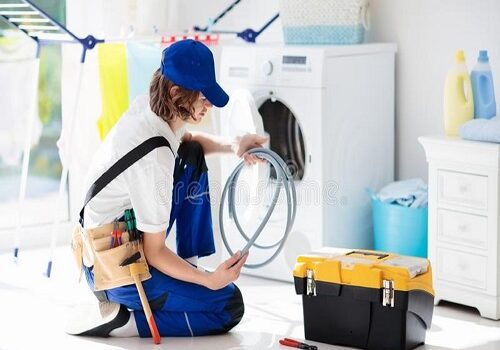
In order to clean the washing machine drain pump filter,
You first have to know where it is. The quickest way to locate the filter on your machine is by checking this out in the user manual.
If you no longer have access to the manual,
The filter is situated behind a circular cover on the lower right-hand side of the front panel of the washing machine.
Still no luck? It is sometimes possible your washing machine does not have a filter at all.
Most newer, high-efficiency washer dryers and washing machines rely on a filter in the pump that runs a self-cleaning program,
The reason for this is that there is no need for any maintenance for you to do. FAQ
Once you have found this have a towel or a small bowl ready,
The next step is that you have to drain any water from the small drain hose (If it has one)
Then turn the circular cover slowly until all the rest of the water comes out of the machine.
Pull out the filter and clear out any items then after you have done this step, check the drain pump as well for any debris
Replace the cleaned filter inside its compartment and then run a rinse and spin cycle to test for how quickly the water is draining away
This procedure should be done every three to six months.
DIY vs. Professional Repair Costs
Consider whether the repairs can be undertaken as do-it-yourself (DIY) projects or if professional assistance is required.
DIY repairs can save on labour costs but may not be suitable for complex issues.
Professional repairs, while more expensive, ensure that the job is done correctly and can extend the life of the washing machine.
In conclusion, the financial considerations when deciding to repair or replace a washing machine are multifaceted.
Homeowners should assess the age of the appliance, the specific repair costs, and the long-term financial implications of both options.
By taking a holistic approach and considering factors beyond the immediate repair bill, individuals can make informed decisions that align with their financial goals and household needs.
